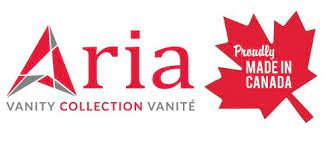Do you want an industrial style home but not sure where to start? Do you dream of concrete floors and double-height ceilings with plenty of natural light? Then industrial decor may be the right choice for your home. Industrial design is a bold look that evolved in the early 20th century. It is inspired by factories, warehouses, and open shop floors.
Industrial design is also a good choice for the eco-conscious consumer and homeowner. You can easily incorporate salvaged items and antiques or even used furniture pieces to great effect in an industrial home. It also emphasizes a minimalist and utilitarian approach to design. It might have started out as the design of choice for converted warehouse lofts and urban apartments but you don’t have to live in one to recreate the look.
Here are a few quick tips on how to pull off the industrial look in any room:
Start with the floor and walls
Concrete and cement are the top choices for industrial kitchens. It offers the rough and unfinished look that industrial design is known for. It’s especially great for kitchen countertops or semi-outdoor walls such as a balcony or patio. But you don’t have to limit yourself to just these 2 materials.
Other popular options for your walls include exposed brick and metallic fixtures. If you’re lucky enough to have a brick wall in any room, don’t try to hide it. Accentuate it with bright paint colors or find other ways to focus attention. After all, this design style is all about highlighting the industrial side of things.
Color palette
The next thing to focus on is your color palette. As you might guess, colors like greens and blues don’t find much use in an industrial space. Instead, you want to start off with a basic palette of black, greys, and browns. In general, you should go for warm and earthy colors as opposed to cool or pastel shades. Experiment with various shades of grey and darker tones of other colors.
In some rooms like bedrooms, for instance, you can add hints of yellow and red for texture. However, you don’t want to use too many soft surfaces like rugs and pillows as it takes away from the rough industrial look.
Expose construction details
The best part of industrial design is that you don’t have to hide construction details such as plumbing or beams like in other style trends. It appeals to designers precisely because it encourages creativity in how you can showcase otherwise hidden details. For instance, exposed copper pipes or large wooden beams in the ceiling are a common feature in industrial rooms. It works especially well in kitchens and living areas. Play around with construction materials like metals, glass, reclaimed wood, and steel for the elusive factory feel.
Lighting

Lighting plays an important part in any home. But its role in industrial design cannot be overestimated. One rule of thumb – forget about lampshades and soft, diffused lighting. Pendant lights with exposed bulbs, Edison bulbs, and metallic looking fixtures should be your go-to choice. Any light fixture in materials like steel, iron, copper, etc is sure to fit right in.
You don’t have to be afraid of trailing wires or exposed ducts either. Use them strategically as decor! You can even add a length of electric wire to your hanging lights to great effect.
Furniture
Select furniture with clean silhouettes and straight lines. You can use a few curved or organic pieces but keep it to the minimum. Look for metal chairs, stone tables, and glass fixtures for the dining room. Here’s your chance to use that salvage find or reclaimed wood furniture you’ve dreamed of.
Look for opportunities to use antique pieces in any space such as an old iron stove instead of a fireplace. Industrial design is pretty flexible and allows you to be as creative as you like.
Decor

When it comes to decorating any room, opt for pieces using metals or similar construction materials. Metal sculptures, artwork featuring factories or cityscapes, and pieces of pipe are excellent choices. Keep accessories to a minimum, especially in the kitchen and living areas. Use open metal shelving to display your cast iron pots and pans as decor options instead. Using metal accents in your bathroom accessories is a great and subtle way to incorporate the trend to the space.
Look at using simple items as opposed to ones with unnecessary embellishments. Group like items together to keep things cohesive. This becomes even more important when it comes to breaking up large and open spaces. Go for open layouts in living areas such as combining the living, dining room, and kitchen. You can also separate areas with large glass windows if you like for an airy feel.
Your end goal is to create the effect of a well-lit and glamorous factory. The industrial design does not mean you should forgo comfort. But it does emphasize a minimalist and low-key approach to interior design.











































